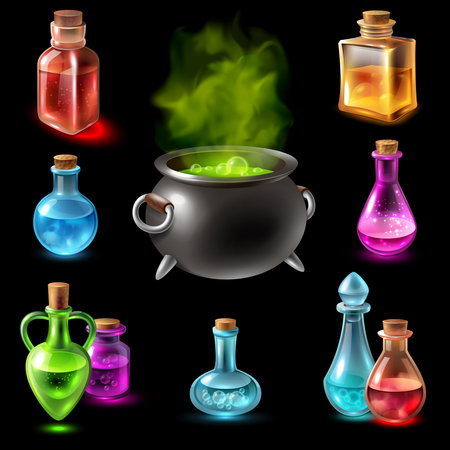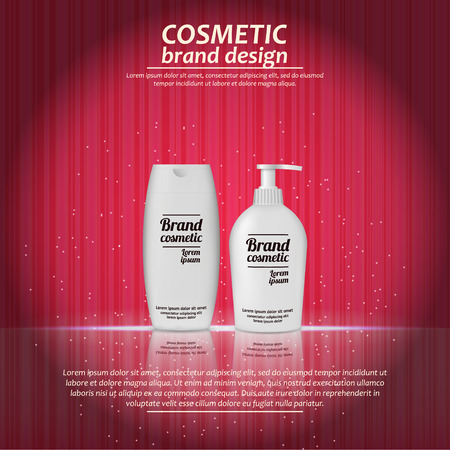Introduction to Budget Body Wash & Soap Market in India
When you walk down the personal care aisle in any Indian supermarket, the sheer variety of soaps and body washes—both Indian brands and international names—can be overwhelming. But here’s the real talk: for most Indians, “budget” isn’t just a preference; it’s a necessity. From hostel guys trying to save a few bucks to middle-class families looking for value packs, budget-friendly soaps and body washes dominate the market. Traditionally, the humble bar soap has ruled Indian bathrooms for decades, thanks to its affordability and no-nonsense cleaning power. However, with rising disposable incomes, increased awareness about skin care, and exposure to global grooming trends (thanks to social media and all those YouTube influencers), more Indians—especially urban youth—are experimenting with body washes and shower gels. This shift is not just about style; it’s about convenience, perceived hygiene, and sometimes even a bit of aspirational branding. Still, the big question remains: when you’re on a budget, do you stick with trusted Indian brands that understand desi needs or shell out extra for those fancy international bottles? In this series, I’ll break down what really matters in the Indian context—price points, performance in our climate, skin feel after use, fragrance longevity, and that all-important “value for money” factor—to help you decide which option suits your daily routine best.
2. Popular Indian Budget Body Wash and Soap Brands
When it comes to affordable body wash and soaps in India, the market is flooded with options that cater to different skin types, preferences, and budgets. Over the years, several homegrown brands have become household names, offering reliable products at a fraction of the price you might pay for international alternatives. Let’s break down some of the most widely available Indian brands – Godrej, Cinthol, Santoor, Medimix, and Patanjali – focusing on their formulations and typical pricing so you know exactly what you’re getting.
Widely Available Indian Brands
| Brand | Main Ingredients / Formulation | Product Types | Typical Price Range (INR) | Unique Selling Point |
|---|---|---|---|---|
| Godrej No.1 | Sandal, Turmeric, Natural Oils | Bar Soap | 10–40 (100g) | Classic fragrance, gentle on skin, budget-friendly |
| Cinthol | Deodorant Protection Formula, TFM-rich base | Bar Soap, Body Wash | 20–70 (75–150g) | Refreshing feel, anti-bacterial properties |
| Santoor | Sandalwood, Turmeric Extracts | Bar Soap, Body Wash | 25–90 (100g bar/250ml wash) | Pleasant fragrance, good for daily use |
| Medimix | 18 Herbal Ingredients (Ayurvedic) | Bar Soap, Body Wash | 30–120 (125g bar/250ml wash) | Herbal formulation, trusted for sensitive skin |
| Patanjali | Aloe Vera, Neem, Tulsi & other Ayurvedic herbs | Bar Soap, Body Wash | 15–80 (75g bar/250ml wash) | Natural ingredients, value-for-money proposition |
A Closer Look at Formulations and Value
The most notable thing about these Indian brands is their focus on traditional ingredients like sandalwood, turmeric, neem, tulsi and other herbal extracts. Many of them also emphasise being free from harsh chemicals while keeping prices competitive – something that really matters when you’re shopping for a daily essential on a budget. For example, Medimix and Patanjali lean heavily into Ayurveda-inspired blends which have strong appeal in Indian households. Meanwhile, brands like Cinthol and Godrej keep things simple but effective with tried-and-tested formulas that deliver freshness without burning a hole in your pocket.
What Makes These Brands Stand Out?
If you ask around or check out local supermarkets and online stores like BigBasket or Amazon India, you’ll notice these brands dominate the shelves. Why? Because they offer a combination of affordability (many bars start at just Rs 10), easy availability across urban and rural areas alike, and formulations that suit Indian weather and skin concerns. Plus, the fragrances are designed to be familiar and comforting to Indian sensibilities—think sandalwood after a hot day or the earthy scent of turmeric. In my own experience using these brands over the years, I’ve found their performance surprisingly decent for the price point; sure, they may not have fancy packaging or “exotic” scents like imported brands do but they get the job done effectively.

3. International Brands That Made a Mark in India
When it comes to budget body wash and soaps, international brands have created quite a stir in the Indian market over the past decade. The likes of Dove, Palmolive, and Nivea are no longer foreign names—these brands have become household staples for many Indian families seeking quality at an affordable price. Let’s break down how these global giants have adapted themselves for Indian consumers and what makes them popular among budget-conscious buyers.
Dove: The Gentle All-Rounder
Dove is almost synonymous with “moisturising soap” in India. Unilever’s marketing has been on point, especially with the launch of their 50g and 75g bars priced specifically for the Indian market. The soap claims to have 1/4th moisturising cream, which actually makes a difference during harsh Indian winters (trust me, my skin gets dry like crazy). What sets Dove apart is its ability to cater to different skin types through various product variants—like Dove Pink/Rose, Dove Go Fresh, and even tailored packs for men. And yes, you’ll find these in every supermarket, local kirana store, and even on online portals at budget-friendly rates.
Palmolive: Aromatic and Affordable
Palmolive might not be as aggressively marketed as Dove, but those who know about it swear by its fresh fragrances. Their body washes—like Palmolive Aroma Morning Tonic or Palmolive Thermal Spa—have been locally manufactured to keep prices low while still delivering that international feel. I personally picked up a bottle from a Big Bazaar sale once, and honestly, the lather and fragrance were on par with pricier options. Palmolive’s soaps and body washes often come with value packs or bundled offers to suit the typical Indian family’s shopping style.
Nivea: Trusted German Quality with an Indian Touch
Nivea has always had a strong reputation for skincare, and their bar soaps and shower gels are no different. They offer products specifically designed for hot and humid conditions (think Nivea Lemon & Oil or Nivea Fresh Active), which is a blessing given our climate. Plus, the company regularly launches “Made in India” versions that cost much less than their imported counterparts without compromising on quality or fragrance longevity. As someone who sweats buckets during summer commutes, I’ve found Nivea’s freshness factor lasts longer than most local options.
Indian Adaptations: Localising to Win Hearts
One thing these international brands have mastered is localisation—not just in pricing but also in ingredients and fragrances that appeal to Indians. For example, you’ll find variants with neem, sandalwood, or lemon extracts—all familiar scents here. Packaging sizes are also smaller to make them accessible at lower price points (Rs. 25-50 range), catering perfectly to students or bachelors like me who don’t want to burn a hole in their wallet yet crave some premium vibes.
Bottom Line
International brands like Dove, Palmolive, and Nivea have managed to win over Indian consumers by offering quality products adapted for our unique needs—all without breaking the bank. If you’re looking for budget-friendly yet reliable options that bring a touch of global quality to your bathroom shelf, these brands definitely deserve a spot on your next shopping list.
4. Ingredient & Fragrance Comparison: Indian vs International
When it comes to choosing a budget body wash or soap, the ingredient list and fragrance profile play a major role, especially for us in India where climate, skin type, and cultural preferences are unique. Here’s my honest, first-hand take after testing both Indian and international options over several weeks.
Ingredients: Traditional vs Modern Chemistry
| Brand Origin | Main Ingredients | Ayurvedic/Traditional Elements | Chemical Content |
|---|---|---|---|
| Indian Brands | Coconut oil, neem, tulsi, sandalwood, turmeric, aloe vera | High – often marketed as “Ayurvedic” or “herbal” | Moderate – some SLS/parabens but many brands now paraben-free |
| International Brands | Synthetic surfactants (SLS/SLES), glycerin, shea butter, fragrance oils | Low – rare to find Indian herbs unless specialized range | High – more artificial colors/fragrances; preservatives common |
From my tests, Indian soaps from brands like Medimix or Himalaya stick closer to natural formulas with ingredients our grandmothers swear by. You’ll find neem for antibacterial action and sandalwood for its cooling effect—perfect for hot Indian summers. International brands like Dove or Palmolive mostly use synthetic cleansers that lather more but sometimes strip natural oils.
Fragrance: What Suits the Indian Nose?
Let’s be honest—fragrance is half the experience. Most Indian brands favour mild scents inspired by nature: sandalwood, rosewater, vetiver (khus), and fresh herbs. These are familiar and don’t overpower you in the heat. On the other hand, international options go for strong floral, fruity, or musky notes; they last longer but can feel artificial or even irritating in our humidity.
Typical Fragrance Profiles Comparison
| Brand Origin | Common Scents | Longevity (on skin) |
|---|---|---|
| Indian Brands | Sandalwood, neem-tulsi, citrus, jasmine, khus-vetiver | Mild to moderate (1-2 hours) |
| International Brands | Lily, lavender, vanilla, ocean breeze, shea butter blends | Strong (up to 4 hours) |
If you’re someone who sweats a lot or prefers subtlety in crowded trains or offices (trust me—it matters!), Indian fragrances feel less intrusive. Also worth noting: I found fewer complaints of rashes or itching with local herbal scents compared to synthetic fragrances from abroad.
Verdict: What Works Best in India?
If your priority is traditional ingredients and gentle fragrance suited for Indian weather and skin sensitivity, homegrown brands have a clear edge. However, if you want international-style luxury lather and bold scent throw (and your skin isn’t too sensitive), imported options deliver that “spa-like” feel at home. My advice? Read the label closely—especially if you have allergies or want to avoid parabens/SLS. For most Indian men and women seeking budget-friendly everyday freshness without drama, desi formulas tick more boxes.
5. Performance and Skin Feel: Practical Tests & Results
As someone who deals with the typical Indian climate—hot summers, humid monsoons, and dry winters—I put both budget Indian body washes/soaps and their international counterparts to a real-world test. Here’s how they stacked up on lather, cleansing power, and post-bath skin feel, keeping in mind the common Indian skin types ranging from oily to combination and even sensitive skin.
Lather Quality: Suds Showdown
Indian brands like Godrej No.1 and Santoor tend to offer a quick, dense lather, especially when used with hard water that’s common in many Indian cities. They foam up fast but sometimes wash off too quickly. In contrast, international brands like Dove or Palmolive (even their budget lines) create a creamier, longer-lasting lather that feels more “luxurious” but may require more water for full rinsing—a small detail that matters if you’re conscious of water usage.
Cleansing Efficacy: Sweat, Dust & Pollution Test
After a day out dealing with Delhi’s dust or Chennai’s humidity, the cleansing power is where differences really show. Indian soaps like Cinthol or Medimix are tough on sweat and grime—sometimes almost too tough, leaving the skin squeaky clean but occasionally stripped of natural oils. International options such as Nivea’s budget shower gels tend to clean gently; they remove dirt effectively but maintain some skin moisture, which can be a plus during winter or for those with dry/combination skin.
After-Bath Skin Feel: Real Comfort?
This is where personal preference kicks in. With most Indian soaps, there’s a familiar “tightness” after drying off—what my mother calls the “real clean” feeling. For me, though, this sometimes means reaching for moisturiser right away. International body washes generally leave a softer, slightly conditioned feel; I noticed less immediate dryness and no irritation even after daily use during peak summer heat.
Typical Indian Skin Types & Weather Impact
If you have oily or combination skin (like most of us do), Indian soaps are practical—they don’t leave residues and handle sweat well. But if your skin is prone to dryness (especially in northern winters), international brands’ milder formulas might offer better comfort. Also worth noting: heavy fragrances in some Indian brands can irritate sensitive skin, while international variants tend to keep things subtle.
Bottom Line from My Tests
For everyday use in India’s challenging weather, local brands win on deep cleaning and value. However, if you prioritise mildness and post-bath softness—especially during dry spells—international options justify their price tag. Ultimately, it comes down to your own skin needs and whether you prefer that “squeaky clean” finish or a more moisturised feel straight out of the shower.
6. Value for Money: Pricing, Sizes & Accessibility
Let’s be honest, for most of us desi guys, budget is the real game-changer when picking a body wash or soap. So how do Indian brands stack up against international ones when it comes to value for money? Let’s break it down like a proper practical test.
Cost Per Use: Desi vs International
When you look at cost per use, Indian brands usually come out on top. For example, a 100g bar of Medimix or Cinthol costs about ₹30-50 and lasts easily for 2-3 weeks if you bathe daily (which you should, given our weather!). In comparison, something like Dove or Nivea (imported versions) can go upwards of ₹70-120 for the same size and often melts faster in our hot bathrooms.
Body Wash: Pump vs Squeeze Bottles
If you’re switching to liquid body washes, Indian brands like Fiama or Santoor offer 250ml packs for around ₹99-150, while international brands such as Palmolive or The Body Shop are easily double that price. Plus, Indian options often come with refill packs – very paisa vasool if you ask me.
Pack Sizes: More Choice with Local Brands
Indian companies understand our joint-family system. You get everything from single-use sachets (₹2-5, perfect for travel or hostel life) to jumbo family packs at wholesale rates. International brands mostly stick to standard sizes and rarely have those pocket-friendly options.
Accessibility: Kirana Store Friendly
This is where desi products truly win. Need a quick bar of soap? Your local kirana store will stock Lifebuoy, Godrej No.1, Dettol – sometimes even loose bars! Supermarkets and chemists carry bigger brands but if you want something fancy from outside India, chances are you’ll need to visit a big mall or order online—and pay delivery charges too.
Online Shopping: Both Sides Compete
On Amazon, Flipkart or BigBasket, you’ll find both types – but offers and discounts are almost always better on local brands. Combo packs, festival deals and cashback make Indian soaps even more pocket-friendly.
Final Thoughts on Budget-Friendliness
If your main criteria is value for money – Indian brands clearly have the upper hand in terms of cost per use, flexible pack sizes, and easy access at every street corner. International soaps and washes are nice for gifting or special occasions but for daily use and true budget-friendliness? Swadeshi is king.
7. Conclusion: What Should Indian Men Choose?
After putting a range of budget body washes and soaps to the test, both from Indian and international brands, here’s my honest take for the Indian man. If your priority is affordability without compromising on basic quality, local Indian brands have truly stepped up in recent years. They’re not only pocket-friendly but also increasingly focused on Ayurvedic ingredients that suit our humid climate and typical Indian skin types—think neem, tulsi, haldi, and sandalwood. Most of them lather well even in hard water and don’t leave a soapy residue.
On the other hand, international brands often impress with packaging and fragrance variety, but their formulas sometimes overlook the specific needs of Indian skin or weather conditions. Moreover, import duties jack up their prices and some variants are simply too drying for daily use under our sun.
If you’re dealing with sensitive skin or want a genuinely luxurious experience now and then, picking up an imported body wash for special occasions isn’t a bad idea. But for regular use, practicality wins. My recommendation: stick to trusted Indian brands for your everyday shower routine—look for options with natural cleansers and minimal chemicals. They’ll save you money, care for your skin’s health in our climate, and give you a refreshing start to the day without burning a hole in your pocket.
Ultimately, budget doesn’t have to mean compromise. Prioritise what works for your skin type and lifestyle—if you sweat a lot or commute daily in city dust, choose something antibacterial; if you have dry skin, go for moisturising ingredients like coconut or aloe vera. Remember: the best product is the one that fits both your wallet and your needs as an Indian man. That’s my practical takeaway after weeks of trying these products on real Indian skin and in real-world conditions.

